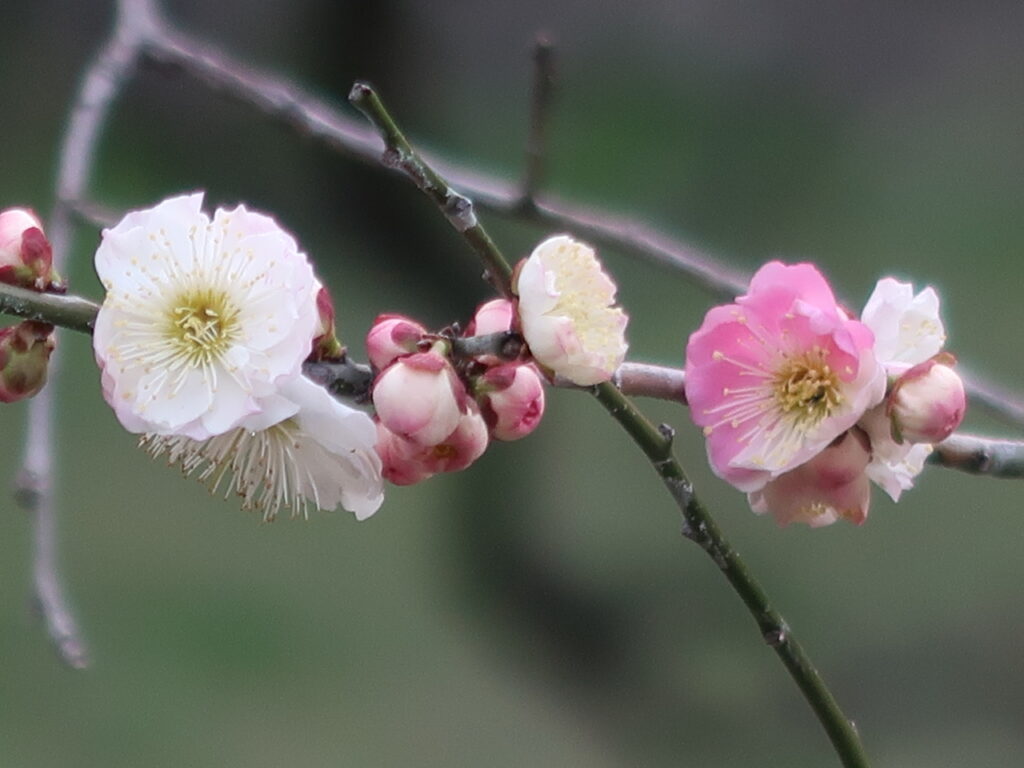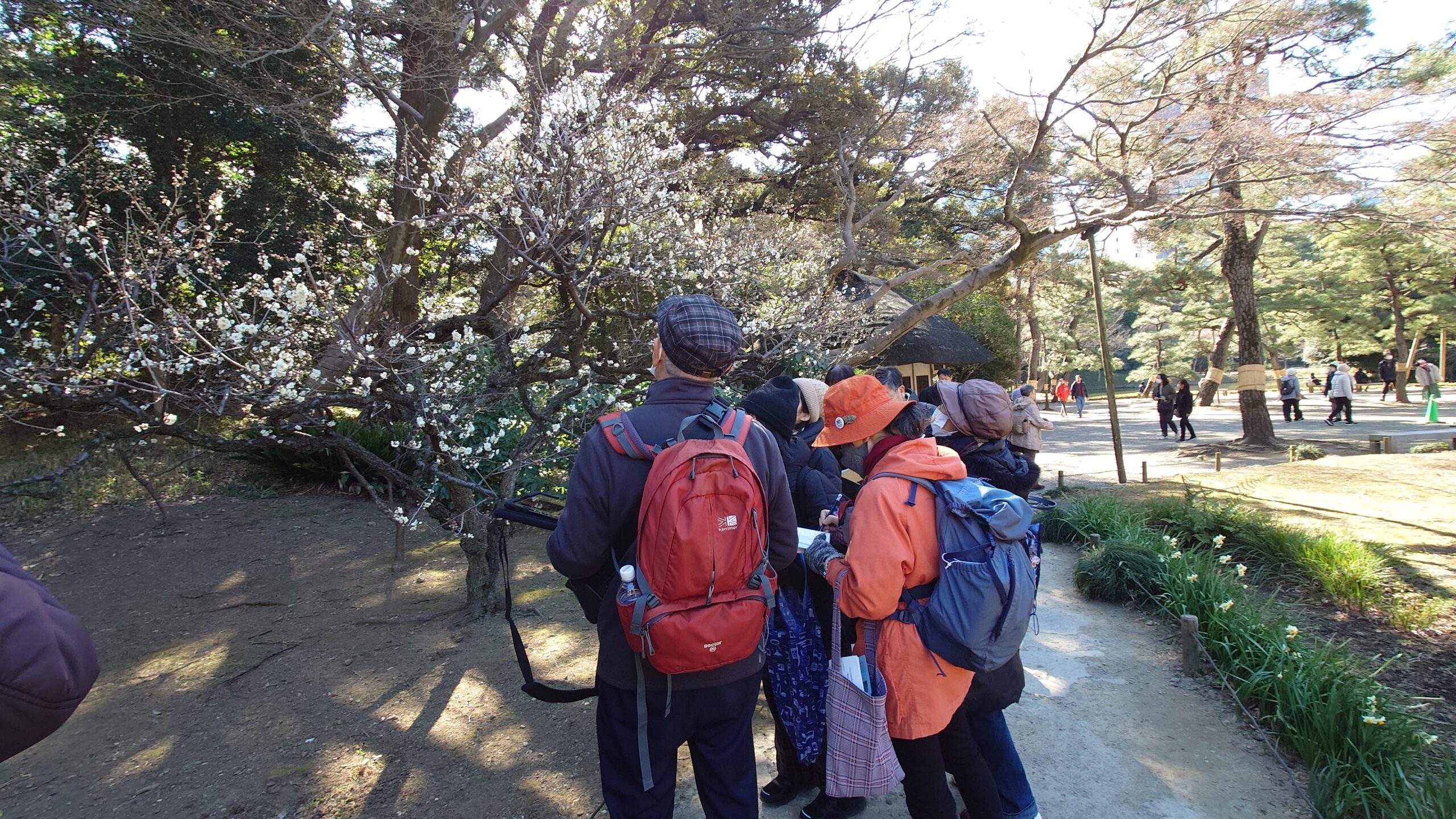Last weekend I hosted an observation event for Ume plum or Japanese apricot and other early spring plants at Koishikawa Korakuen Garden as an organizer as nature observation group in the Tokyo City Guide Club. I invited guides, not only knowledgeable about Ume blossoms and plants, but also about Koishikawa Korakuen Garden’s history, participants were able to hear a lot of interesting stories.


We were given a detailed explanation of the relationship between Koishikawa Korakuen Garden, which was the garden of the Mito clan’s upper residence in Tokyo, and Kairakuen Garden in Mito, which is famous as Ume blossom viewing spot. We also learned that for each plum blossom, the name of the variety can tell you to a certain extent what the shape of the flower and how it blooms, how to interpret the tree shape created by pruning, and how the shape of the flower changes even in one tree depending on the time of year it blooms, making our view of plum blossoms even more interesting.


I also learned a lot of eye-opening stories, such as the fact that the difference between Christmas camellia, which are about to end their season, and Japanese camellia Tsubaki, which are about to enter their peak season, can be easily understood from the perspective of Christmas camellia flowers, which are pollinated by insects, and Japanese camellia flowers, which are pollinated by birds. It seems that the plum blossoms are blooming and coming into full bloom late this year, so it looks like we’ll still be able to enjoy them.


Based on the results of observation workshop, I have also updated my ume plum or Japanese apricot encyclopedia page. Please take a look if you are interested.

